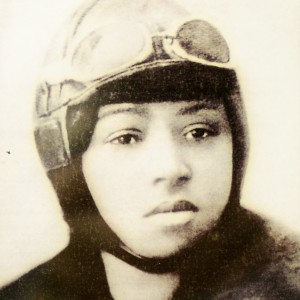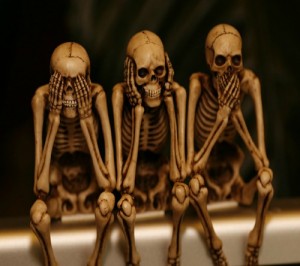There’s a little air museum in Rhinebeck NY with beautifully preserved pioneering planes and all kinds of memorabilia. In amongst the disconcerting war-markings, insane looking flying machines, the smell of oil and countless bits and pieces of aircraft, is a small display with an arrestingly beautiful 1920s sepia-aged print of a young woman in flying gear.
Barnstorming Elizabeth “Bessie” Colman was the first African American to get an international pilots license. Bessie accomplished this at a time when women were only just being accepted into the modern era, and when men would routinely sabotage their aircraft to prevent them flying. But what really grounded her was that being black meant Bessie was turned away by any American flight school she applied to. She had no way to get her pilots license in the US in the early 1920s.
For some context: “In 1913, President Woodrow Wilson ordered the segregation of the federal Civil Service. White and black people would sometimes be required to eat separately, go to separate schools, use separate public toilets, park benches, train, buses, and water fountains… In some locales, in addition to segregated seating, it could be forbidden for stores or restaurants to serve different races under the same roof.” (Wikipedia)
Determined to get to the skies she made it to France and became the first American ever to get an international pilot’s license from the prestigious Fédération Aéronautique Internationale.
Her first appearance as a flyer in the US was at an event honoring veterans of the all-black 369th Infantry Regiment of World War 1 (Harlem Hellfighters) at Curtiss Field on Long Island (close to NYC). Stunt flying was a way for Bessie to work towards becoming a full-time pilot before the age of commercial flight.
“Through her media contacts, she was offered a role in a feature-length film titled Shadow and Sunshine, to be financed by the African American Seminole Film Producing Company. She gladly accepted, hoping the publicity would help to advance her career and provide her with some of the money she needed to establish her own flying school. But upon learning that the first scene in the movie required her to appear in tattered clothes, with a walking stick and a pack on her back, she refused to proceed. “Clearly … [Bessie’s] walking off the movie set was a statement of principle. Opportunist though she was about her career, she was never an opportunist about race. She had no intention of perpetuating the derogatory image most whites had of most blacks“, wrote Doris Rich.”







